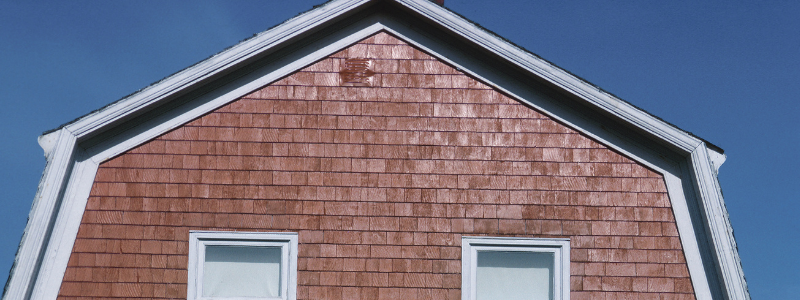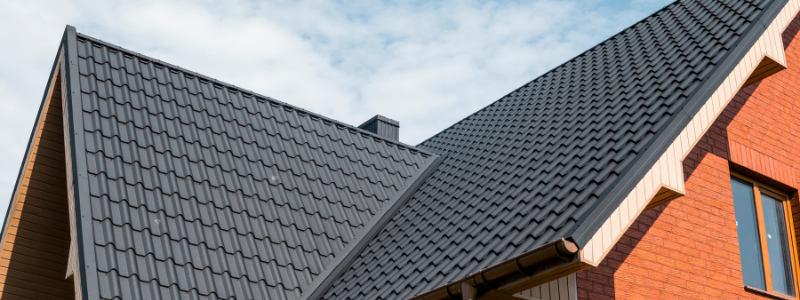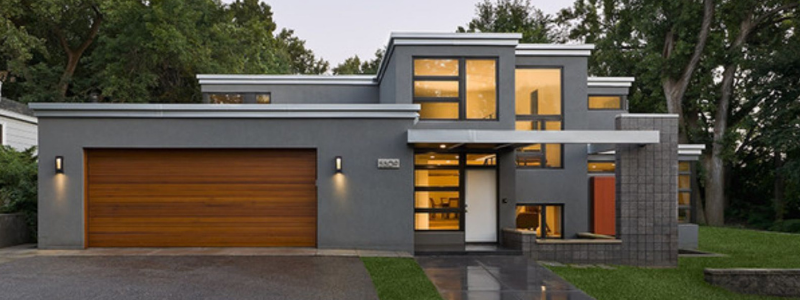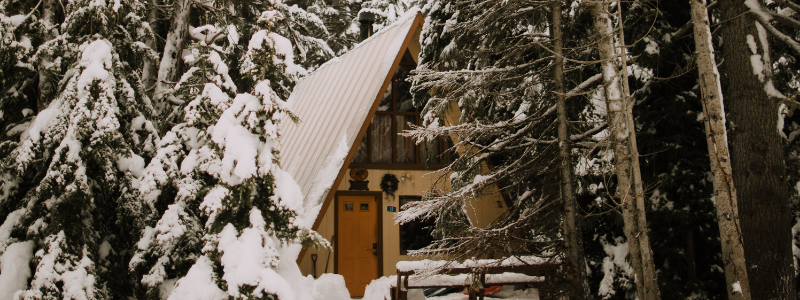
House Roof Types
The roof of your home doesn’t just protect the contents and residents. The shape of the roof plays a significant part in the overall appearance and architectural style of your home.
Some house roof types can even provide additional living space or storage space.
A well-designed and properly maintained roof makes your home more resilient to Colorado’s sometimes-severe weather conditions. The roof can provide increased energy efficiency and weatherproofing. This can also cut home heating and cooling costs.
So what are the most common house roof types in Colorado?
Most Common Colorado House Roof Types
In Colorado, the choice of roof shapes is somewhat dependent on weather. The architectural design that is your personal choice may have to be weighed against what is practical in a state that gets extremes of wind, snow, cold, and heat.

Gable Roof
Gable roofs are often referred to as “inverted V” shapes. Gable roofs slope on two sides: front to back or side to side. There are variations like box gables, open gables, Dutch gables, and gable roofs with dormer windows.
Gable roofs are simple but effective. It is important to get a gable roof pitched just right for Colorado weather conditions.
In Colorado, care must be taken to keep the angle of the slope high enough to allow rain and melting snow to drain off the roof effectively. If the pitch is too low, water lying on the roof may cause damage to the shingles and the underlying structure. However, if the pitch is too high, high winds may damage the shingles and even tear off the roof.

Butterfly Roof
This roof shape has often been called a “reverse gable”. The butterfly design slopes from the outside into the center. This roof type is common with modern, contemporary-looking houses.
Because the pitch is not high, the roof shape offers less wind resistance. However, sloping toward the center causes snow, ice, and rain to collect on the surface.
The fact that this type of roof slopes toward the center makes drainage even more problematic than with a flat roof.

Hip Roof
Hip roofs are popular in Colorado. The sides come together at the top to form a simple ridge. A hip roof has slopes at all four sides of the house.
Pitch is also important with a hip roof. Like gable roofs, the slope on hip roofs must be just the right balance to drain rain and snow but so high that wind resistance is a problem.
Hip roofs are more stable than roof types like gambrel and gable. The inward slope of all four sides makes hip roofs both sturdy and durable.
Given Colorado’s climate, hip roofs are a good choice because they withstand both high wind and heavy snows. The pitch allows snow to easily slide off and avoids standing water.
Dormers or crow’s nests in hip roofs provide extra living space.
The downside is that hip roofs are expensive when compared to gable or A-frame roofs. Their more complex design means more materials and labor so higher costs.
When additional dormers or crow’s nests are added water may collect in seams and cause leaks.
Variations of the hip roof include hip-and-valley roofs, intersecting hip roofs, cross-hip roofs, and pyramid-hip roof shapes.

Flat Roof
Flat roofs and butterfly types of roofs are more common in business structures than in house architecture. However, these roof types are becoming more popular in housing developments.
The advantage of a well-designed flat or butterfly roof is that the shape can offer added outdoor living space. You can add a rooftop garden, patio, or partially enclose a penthouse room. HVAC systems can also be placed on a flat roof out of sight. This roof shape works well for wind resistance.
Flat roofs are cheaper and faster to build because they require few materials and less labor.
One disadvantage is that flat roofs present problems with drainage. Snow, ice, and rain collect on the flat surface. For this reason, flat roofs are not recommended for Colorado climates where there is a lot of snow and rain. Low to no slow also causes problems with weight buildup and often results in leakage into the home as it does with butterfly-shaped roofs.
Flat roofs cost less to build but they can be expensive to maintain and repair.

A-Frame Roof
An A-frame roof is easy to identify. It is a steep, pointed, inverted V. The roof goes all the way to the ground, taking up much or all of the house walls. You’ll see this type of house roof in wooded areas, where a lot of snowfall is expected.
A-frame roofs are simple and cheap to build. The A-frame roof doubles as all or part of the home’s sidewalls.
Besides being inexpensive to build, A-frame roofs are pitched so steeply that water and snow do not accumulate.
There are disadvantages, however. A-frame roofs can make the interior of the home dark. The inside walls are sloped. This limits potential space on the second floor. Not every design lends itself to an A-frame type of roof.

Gambrel Roof
A Gambrel roof is often referred to as a barn roof. It has two different slopes. Unlike the mansard roof style with four sides, the gambrel has two sides.
The lower side of the gambrel roof has a steep, almost vertical slope. The gambrel roof style is popular in farmhouses, log cabins, sheds, workshops, and storage buildings.
Advantages of the gambrel style include extra living space. Homes with gambrel roofs often have garrets, attics, or lofts. Gambrel roofs tend to be less expensive than some roof styles because they are quicker and easier to frame. The style uses only two roof beams. Thus, less material is required.
However, there are some disadvantages. The steep pitch makes a gambrel roof not a wise choice for areas where there are high winds and/or heavy snowfall. The roof style is likely to collapse under heavy pressure. If gambrel roofs are not well constructed the ridges can leak. Gambrel roof ridges must be repaired frequently to keep them watertight. Yearly inspections and repair avoid storm damage.
There are several variations of the gambrel-style roof including gazebo-type roofs and mansard roofs. Some gambrel variations are referred to as French-style roofs, “jerkinhead” roofs, and “saltbox” roofs.
Single properties may include several roof types.
Why Choose a Roofing Specialist?
No matter which roof type you choose for your home, the roof requires annual inspection and repair.
Roofing specialists like B&M Roofing have the expertise and experience to deal with the unique needs of every roof style. Regardless of the roof style, it is important to have your home’s roof checked yearly by knowledgeable roof repair specialists.
When your home has been damaged by Colorado’s challenging weather conditions, it is crucial to choose a Colorado roofing company that can restore your roof, the gutters, downspouts, windows, doors, and siding to their original condition.
To discuss which house roof types are best for you and your family, reliable roof repair or replacement, or to request a free estimate for your home, contact us.




































